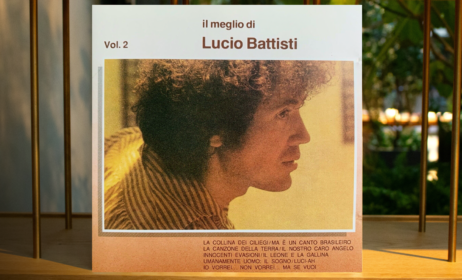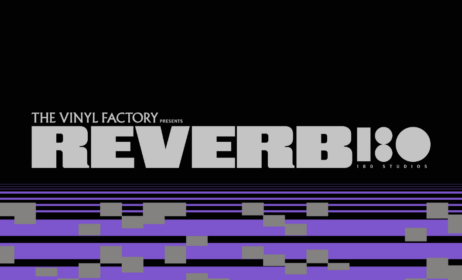Published on
April 19, 2018
Category
Features
There was a lot of hype and excitement around the news that “High-Definition Vinyl” would be available as early as 2019, but not a lot of explanation about what that actually means. It’s Hi-Definitely not as simple as it sounds.
Back in 2016, we reported that Austrian company Rebeat Innovation had filed a patent to develop what it called ‘High Definition vinyl’. Two years later and the company has raised $4.8 million in Series A funding to develop the technology that Rebeat founder Günter Loibl believes will “replace most of the traditional vinyl production.” It goes without saying that a claim this large bears further scrutiny.
Much of the news that was reported last week is no different to that which was revealed when the patent was filed two years ago. Detailed in a gushing press release, HD Vinyl promises to “dramatically increase the quality, lifespan, and fidelity associated with traditional vinyl LPs”, hoping to increase volume and playing time by roughly 30%.
“Instead of traditional cutting and etching techniques,” the company explain, “HD Vinyl employs 3D topographical mapping and laser inscription to deliver a completely different groove,” which is cut into a stamper, thus eliminating the need for electro-plating nickel stampers.
“The result is a stamper that is cleaner to produce, has a far longer lifespan, and leaves a far smaller environmental footprint,” given that it would side-step a traditional pressing plant’s galvanics department, which grows the nickel stampers in chemical baths.
As clickable a concept as ‘HD Vinyl’ is, the first point to clarify, is that the 3D-mapping and laser-cutting process involved in the making of HD Vinyl relates to the creation of a stamper, rather than the record itself. Unlike the deeply flawed 3D-printed record idea floated a few years ago, HD Vinyl would still rely on existing record pressing plants to manufacture the finished article. When Rebeat says that the technology will be “completely backwards-compatible”, they presumably mean that both conventional record players and record presses will still be a necessity.
So how will they actually be made? According to Loibl, the new stampers will be laser cut onto an as-yet-undecided ceramic material, which he says will avoid the degradation inherent in the nickel-based stampers. “Ceramic material has a huge advantage over nickel: no chemical reaction with PVC. On a nickel stamper with every copy some molecules are put out of the stamper by PVC. This is the main reason for stamper degradation.”
Unlike nickel stampers, which have a traditional lifespan of around 1,000 records, Loibl suggests that the ceramic material will mean that the first record pressed will be as precise as the 10,000th. What is not clear yet, is now these stampers are going to be integrated into the existing machines, as nickel has a crucial degree of malleability that allows them to be fitted to the presses. They would also need to withstand up to 90 tonnes of pressure every time they go under impression.
Loibl also hopes that the new stampers will have an effect on the lifespan of your records. With the 3D-mapping apparently removing the tangential cut and radial reading of grooves from the process, the stampers will create records that have what he calls a “continuous shape of groove”.
While this is some way way off, he believes that “it will be possible for cartridge manufacturers to create a needle shape that perfectly fits into the HD Vinyl groove… meaning the needle suddenly touches the whole surface of the groove not just 2 small points left and right. This would reduce the wear of the record dramatically.”
As with much of the HD Vinyl project, the initial idea is qualified by a number of ‘ifs’ and ‘woulds’ that appear incompatible with the 2019 street date touted for the first batch.
The extent to which HD Vinyl would be able to alleviate the demand on pressing plants will also come down to just how quickly the technology can be integrated. A pressing plant running six presses makes in the region of 4,000 stampers a year, the bigger plants in Europe up to five times that amount. Rebeat Innovation hope that their single $600,000 machine will make 700 stamper sets in the first year, with a view to accelerating production four-fold the following year. If HD Vinyl is to replace traditional vinyl production, it’s going to take a few years.
And how about those claims for greater volume and playing time? “We know the exact amplitude at any time on the stamper, because we generate a 3D model of it, so we can optimize the space between the grooves,” Loibl explains. “By utilizing that we can use the additional space for a louder signal (without compressing it).” What is not clear is why louder and longer equates to better, especially in an environment where other formats, like streaming, offer infinite playing time at whatever volume your speakers desire.
So what does the consumer get out of it, and will the finished product be more expensive, given the technology involved in its production? “You get an HD Vinyl for nearly the same price of a traditional record, but you get much better sound, you help saving the environment and you can even play it on your existing turntable.”
While “nearly the same price” should alarm anyone who believes records are already too expensive, the cost for the label or artist should also be considered. With independents struggling to make ends meet as it is, any increase in manufacturing cost could see HD Vinyl looking more like a premium product for those with the deepest pockets.
There is a more fundamental question here, regardless of how workable the technology is: why do it in the first place? Undoubtedly the most attractive element of the innovation is the potential to remove the chemical component from the manufacturing process and its attendant environment benefits.
Take a step back though and another question presents itself: Is high-definition in itself a reasonable thing to desire from a record? “Everyone, even without golden ears, will immediately hear the difference,” perhaps in the same way that it is impossible not to notice the deadening effect of HD TV on the space and texture of classic films. Isn’t one of the most important aspects of vinyl, and its ability to communicate sound on an innately human level, that it is not HD?





